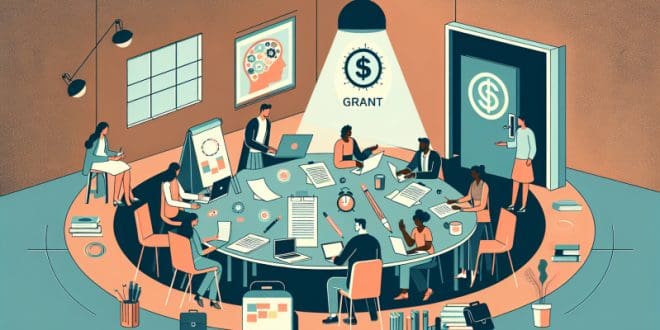As we delve into the complexities of grant writing, it’s crucial to recognize that beyond the precision of budgets and the clarity of objectives, lies an intricate dance of persuasion. In this deep dive, we aim to bridge the gap between the analytical and the emotional, unearthing the potent psychological triggers that can make or break a grant application. The Grants Club community blog welcomes you to an exploration of the often-overlooked aspects of grant writing, where strategy meets storytelling, and where facts are woven into narratives that resonate with the hearts and minds of funders.
When discussing the structural components of grant writing, we often emphasize the need for a well-defined problem statement, clear objectives, and a detailed budget. However, today, we invite you to immerse yourself in the world of psychological strategies that can elevate your grant proposals to new heights.
Firstly, consider the power of strategic storytelling. A compelling narrative does more than present information; it evokes emotions and paints a picture that stays with the reader. The most successful grant applications are those that tell a story, not just about the organization or the project but犀利士
about the impact that the funding will have on real lives.
Emotive language, when used judiciously, can tap into the empathetic side of the human psyche. It’s not about manipulation; it’s about connecting on a profound level. Descriptive words that detail the struggle, triumph, or transformation associated with your cause can transform a two-dimensional document into a captivating appeal.
Social proof, too, is a powerful influencer. When funders see that other reputable organizations or individuals support your project, it provides a level of validation that goes beyond the merit of the proposal itself. Integrating testimonials, endorsements, and success stories can subtly suggest to potential funders that they should be part of a winning team.
In analyzing winning grant applications and interviewing grant-making professionals, we find that those subtle cues of trustworthiness, credibility, and alignment of values often sway decision-makers. Acknowledging this invisible thread can lead to more thoughtful and effective grant writing.
The challenge for non-profit professionals is to craft narratives that intertwine factual evidence with emotional resonance. This balance is not easily struck, but when done correctly, it allows grantors to envision the tangible difference their support will make, thus making the proposal more persuasive.
In conclusion, while data-driven arguments lay the foundation of a strong proposal, it is the psychological understanding of your audience that builds the house. As researchers, non-profit veterans, and fund professionals, let us engage with these strategies mindfully. May we craft grant narratives that resonate not just on paper, but in the hearts and minds of our potential funders, thereby opening new doors to funding and opportunity.
We encourage our community to contemplate the impact of these psychological triggers and to share their experiences and insights. How have you integrated these elements into your grant writing? What stories have captivated your audience and what lessons have you learned? Join us in this ongoing conversation, as we collectively refine the art of persuasion in grant writing.
 Grants Club Community
Grants Club Community







